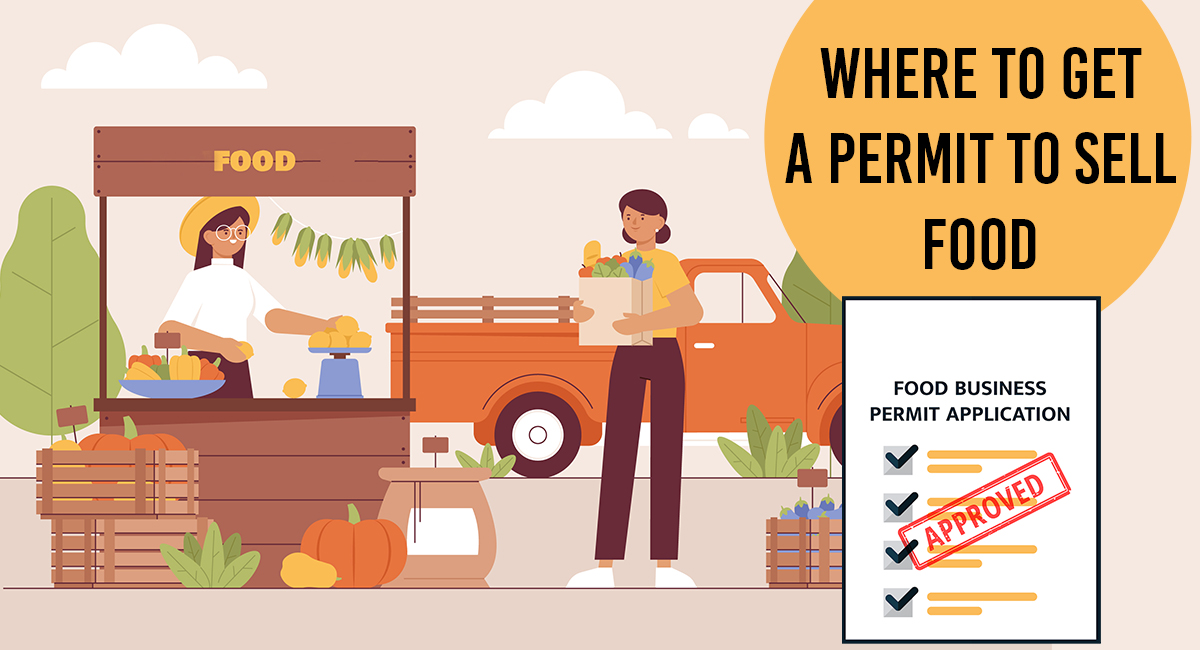In today’s bustling world of culinary entrepreneurship, aspiring chefs, bakers, and food enthusiasts often find themselves faced with the regulatory hurdle of obtaining permits to sell their delectable creations. Whether you’re whipping up gourmet cupcakes from your home kitchen or planning to launch a food truck empire, understanding the ins and outs of acquiring the necessary permits is crucial for success. In this comprehensive guide, we’ll explore where to obtain permits to sell food, delve into specific regulations in California and Texas, address common questions regarding selling food on platforms like Amazon, and discuss exemptions for certain food operations. So, let’s embark on this flavorful journey together!
Permit to Sell Food from Home
For many budding culinary entrepreneurs, the convenience and cost-effectiveness of starting a home-based food business are irresistible. However, before you start taking orders for your signature dishes, it’s essential to ensure compliance with local health regulations. In most jurisdictions, including California and Texas, individuals looking to sell food from home are required to obtain a Cottage Food Permit or Home Food Processor License.
In California, the Cottage Food Law allows individuals to prepare and sell certain low-risk foods from their home kitchens. To obtain a Cottage Food Permit, aspiring home food entrepreneurs must complete a food processor course, label their products appropriately, and adhere to specific food safety requirements. The permit typically comes with restrictions on the types of foods that can be sold and imposes revenue limitations.
Similarly, in Texas, home-based food businesses must comply with the state’s Cottage Food Law, which permits the sale of non-potentially hazardous foods directly to consumers. Obtaining a Cottage Food Permit in Texas involves completing a food handler’s training course, meeting labeling requirements, and following prescribed sanitation practices.
How Much Is a Food Permit in California?
The cost of a food permit in California varies depending on the type of permit and the jurisdiction in which you intend to operate. For home-based food businesses operating under the Cottage Food Law, the permit fees are relatively modest, often ranging from $100 to $500 annually. However, additional costs may arise from mandatory training courses, food safety certifications, and required equipment purchases.
For commercial food establishments such as restaurants, food trucks, and catering businesses, the permit fees can be significantly higher. In California, these businesses are subject to inspection fees, plan review fees, and annual permit renewal fees, which can amount to several thousand dollars per year. It’s essential to budget for these expenses when planning your food business venture in the Golden State.
Do You Need a Seller’s Permit to Sell on Amazon?
The rise of e-commerce platforms has opened up new avenues for food entrepreneurs to reach a broader audience. Many individuals wonder whether they need a seller’s permit to sell food products on popular online marketplaces like Amazon. The answer typically depends on the nature of the products you’re selling and your location.
In California, sellers are required to obtain a seller’s permit from the California Department of Tax and Fee Administration (CDTFA) if they engage in the business of selling tangible personal property for retail purposes. This requirement extends to online sellers, including those operating on platforms like Amazon. Therefore, if you’re selling packaged food items or other tangible goods on Amazon and you’re based in California, you’ll likely need a seller’s permit.
In Texas, the rules are similar. Sellers conducting retail sales in the state are generally required to obtain a Texas Sales and Use Tax Permit from the Texas Comptroller of Public Accounts. This permit is necessary for selling tangible personal property, including food products, whether through traditional brick-and-mortar stores or online platforms like Amazon.
Food Texas: Navigating Food Permit Regulations
Texas boasts a rich culinary landscape, with a diverse array of food businesses ranging from food trucks dishing out tacos to upscale restaurants serving gourmet fare. If you’re planning to join the Lone Star State’s vibrant food scene, understanding the permit requirements is essential.
In Texas, food establishments are regulated by the Texas Department of State Health Services (DSHS), which enforces the Texas Food Establishment Rules (TFER). Depending on the type of food operation, permits may be required at the state, county, or municipal level. For example, food trucks and mobile food vendors must obtain a Mobile Food Unit Permit from the local health department, while brick-and-mortar restaurants need a Food Establishment Permit.
The cost of food permits in Texas varies depending on factors such as location, facility size, and the type of operation. Generally, permit fees range from $100 to $500 or more annually. Additionally, food businesses must undergo regular inspections to ensure compliance with food safety standards outlined in the TFER.
Food Operations That Do Not Need Permits
While obtaining a food permit is a necessary step for most food businesses, there are exceptions for certain types of operations. In both California and Texas, there are specific exemptions or allowances for small-scale food producers and charitable organizations.
For example, in California, the Homemade Food Operations Act (AB 626) allows for the sale of homemade food products prepared in private home kitchens without a permit, provided certain criteria are met. Similarly, in Texas, certain non-profit organizations may be exempt from certain permit requirements if they meet specific conditions outlined by the DSHS.
It’s important to note that while some food operations to use customized food boxes may be exempt from permit requirements, they are still subject to food safety regulations and must comply with applicable laws to ensure the health and safety of consumers.
Conclusion
Obtaining a permit to sell food is a critical step for anyone looking to turn their culinary passion into a profitable business venture. Whether you’re operating from the comfort of your own kitchen or taking your cuisine to the streets with a food truck, understanding the permit requirements and regulations is essential for success.
In this guide, we’ve explored where to obtain permits to sell food, discussed specific regulations in California and Texas, addressed common questions regarding selling food on platforms like Amazon, and highlighted exemptions for certain food operations. By following the guidelines outlined here and ensuring compliance with local health regulations, you can embark on your entrepreneurial journey with confidence, knowing that you’re serving up delicious dishes while prioritizing the safety and well-being of your customers.



